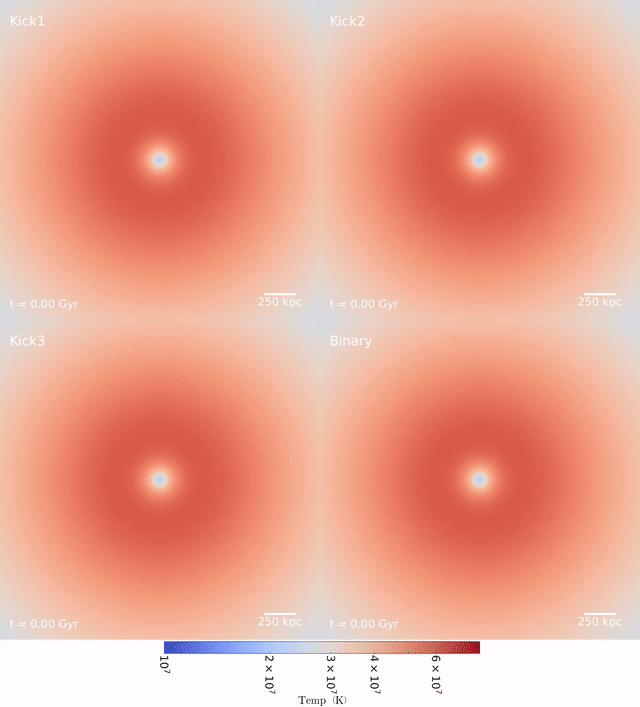A toy model of intracluster medium sloshing in galaxy clusters
Iraj Vaezzadeh
Galaxy clusters are the largest structures in the Universe which have gravitationally collapsed to a virialised state. Galaxy clusters continue to grow via mergers with other clusters, galaxy groups, and by accreting gas from the Cosmic Web (Kravstov & Borgani 2012). Mergers between galaxy clusters and groups leave observable features in the X-ray emitting intracluster medium (ICM) of a galaxy cluster. Sloshing cold fronts (SCFs) are one such feature (Markevitch & Vikhlinin 2007), and are primarily triggered by off-axis mergers between a galaxy cluster and a smaller cluster/group. SCFs can be used to constrain transport properties of the ICM plasma (ZuHone & Roediger 2016), as well as determining merger histories of clusters (Roediger et. al. 2012).
We have developed a toy model to predict the behaviour of sloshing cold fronts arising from a perturbation to a galaxy cluster. The model assumes that sloshing is the result of gas parcels oscillating independently with their local buoyant frequency (the Brunt-Väisälä frequency) after being perturbed from equilibrium. We tested the model against a suite of hydrodynamic+N-body simulations of a galaxy cluster whose ICM plasma received an instantaneous unidirectional kick of varying strength, and a simulation of the same cluster undergoing an off-axis merger with a cluster 10 times less massive. A movie of the simulations can be seen in Figure 1.
Our toy model was able to predict the staggered pattern of sloshing fronts about the cluster core. The model also predicted the fronts should move with an approximately constant speed which is both a small fraction of the ICM sound speed, and a function of SCF number. Our simulations showed these predictions to be approximately true (within a factor of about 2), and indicate that finding the largest SCF in a cluster is crucial if we want to accurately determine merger ages. Figure 2 shows the speed of the SCFs from the simulations derived by linear regression compared with the speeds predicted by the toy model.

